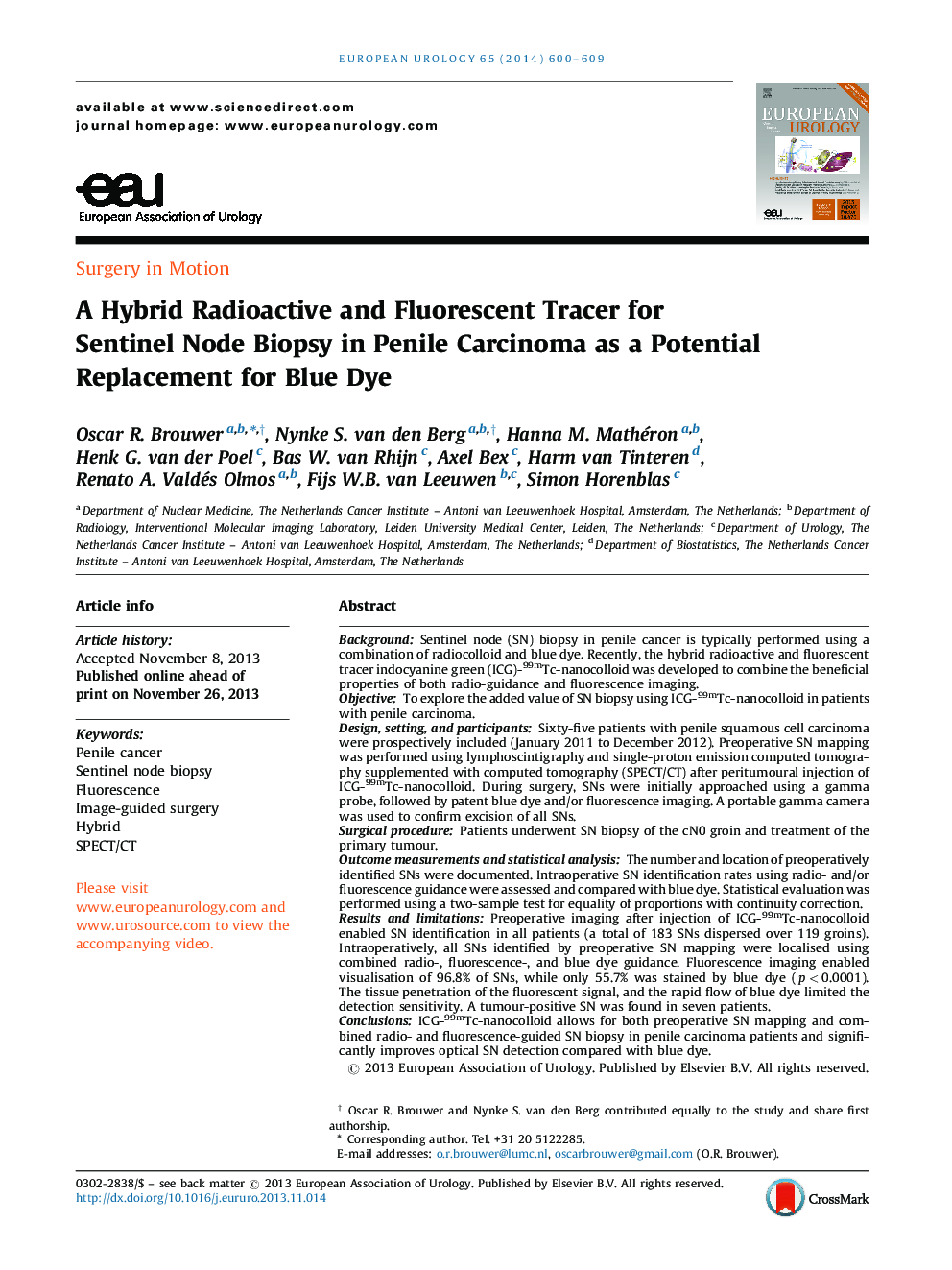| کد مقاله | کد نشریه | سال انتشار | مقاله انگلیسی | نسخه تمام متن |
|---|---|---|---|---|
| 6176850 | 1253066 | 2014 | 10 صفحه PDF | دانلود رایگان |
BackgroundSentinel node (SN) biopsy in penile cancer is typically performed using a combination of radiocolloid and blue dye. Recently, the hybrid radioactive and fluorescent tracer indocyanine green (ICG)-99mTc-nanocolloid was developed to combine the beneficial properties of both radio-guidance and fluorescence imaging.ObjectiveTo explore the added value of SN biopsy using ICG-99mTc-nanocolloid in patients with penile carcinoma.Design, setting, and participantsSixty-five patients with penile squamous cell carcinoma were prospectively included (January 2011 to December 2012). Preoperative SN mapping was performed using lymphoscintigraphy and single-proton emission computed tomography supplemented with computed tomography (SPECT/CT) after peritumoural injection of ICG-99mTc-nanocolloid. During surgery, SNs were initially approached using a gamma probe, followed by patent blue dye and/or fluorescence imaging. A portable gamma camera was used to confirm excision of all SNs.Surgical procedurePatients underwent SN biopsy of the cN0 groin and treatment of the primary tumour.Outcome measurements and statistical analysisThe number and location of preoperatively identified SNs were documented. Intraoperative SN identification rates using radio- and/or fluorescence guidance were assessed and compared with blue dye. Statistical evaluation was performed using a two-sample test for equality of proportions with continuity correction.Results and limitationsPreoperative imaging after injection of ICG-99mTc-nanocolloid enabled SN identification in all patients (a total of 183 SNs dispersed over 119 groins). Intraoperatively, all SNs identified by preoperative SN mapping were localised using combined radio-, fluorescence-, and blue dye guidance. Fluorescence imaging enabled visualisation of 96.8% of SNs, while only 55.7% was stained by blue dye (p < 0.0001). The tissue penetration of the fluorescent signal, and the rapid flow of blue dye limited the detection sensitivity. A tumour-positive SN was found in seven patients.ConclusionsICG-99mTc-nanocolloid allows for both preoperative SN mapping and combined radio- and fluorescence-guided SN biopsy in penile carcinoma patients and significantly improves optical SN detection compared with blue dye.
Journal: European Urology - Volume 65, Issue 3, March 2014, Pages 600-609
